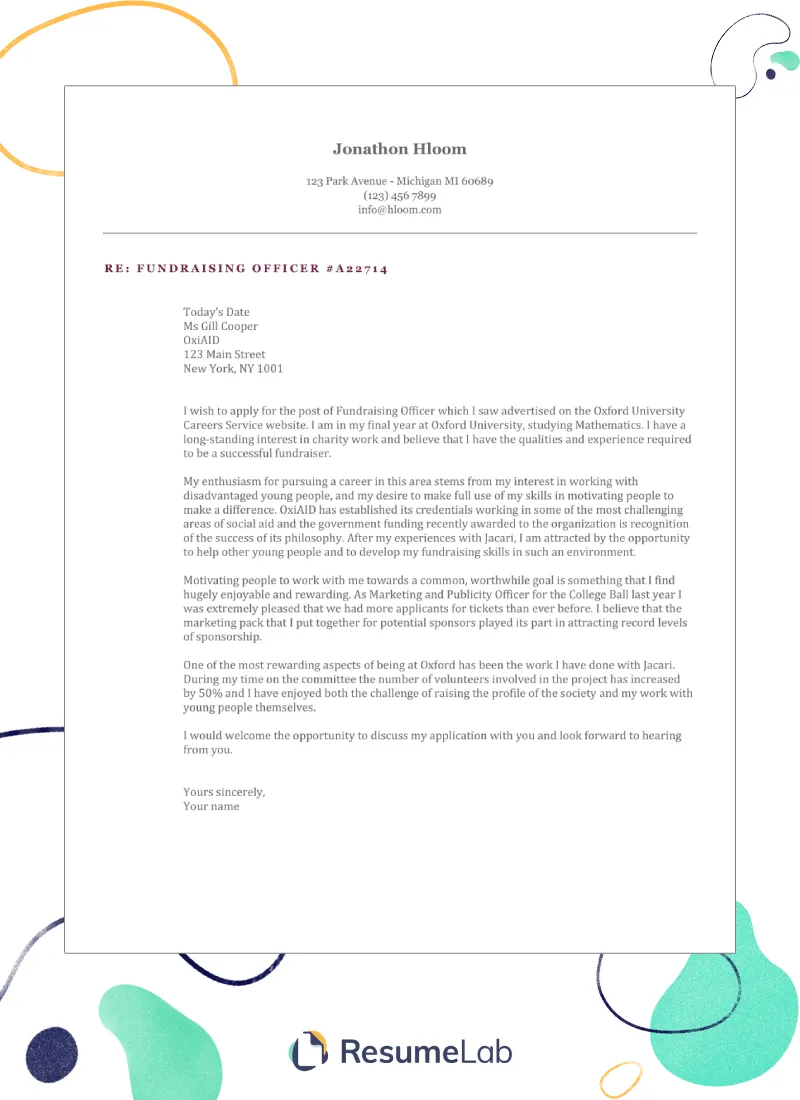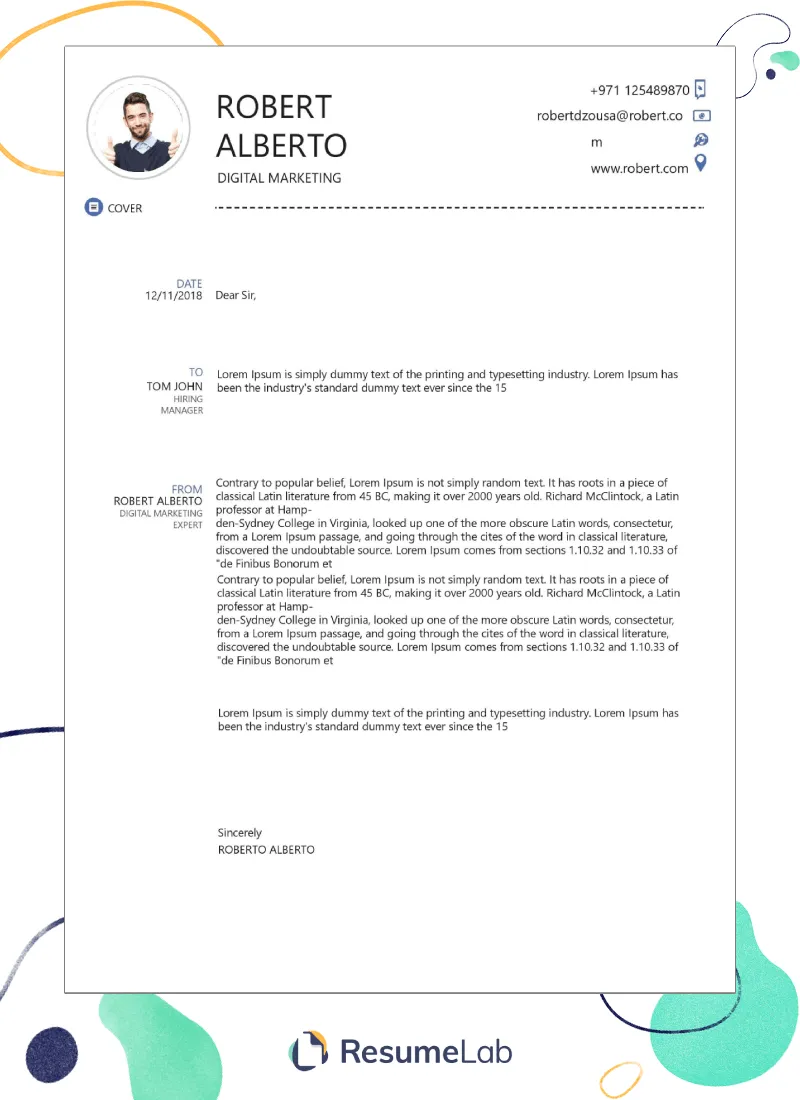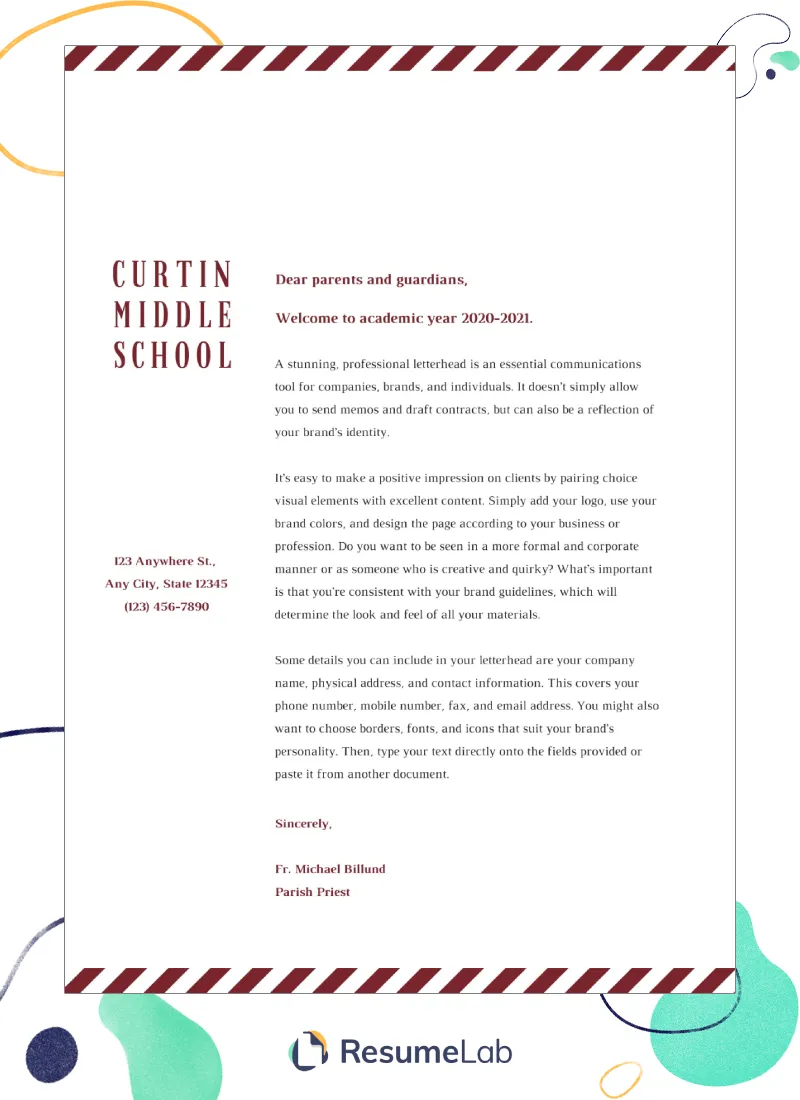What is a Cover Letter and Why Do You Need One
A cover letter is a crucial document accompanying your resume when applying for jobs. It serves as an introduction to the hiring manager, providing context for your application and highlighting your relevant skills and experiences. Think of it as your chance to make a strong first impression, showcasing your personality and demonstrating your genuine interest in the position and the company. Unlike your resume, which provides a factual overview of your background, a cover letter allows you to tell a story, connecting your qualifications with the specific requirements of the job. It’s an opportunity to elaborate on your resume and explain why you are the perfect fit for the role.
In today’s competitive job market, a well-crafted cover letter can significantly increase your chances of getting noticed. Many hiring managers consider a cover letter essential, as it provides insight into your communication skills, writing abilities, and overall professionalism. It allows you to address any potential gaps in your resume, explain career changes, and demonstrate your understanding of the company’s values and goals. By tailoring your cover letter to each job application, you can show that you’ve done your research and are genuinely interested in the opportunity. In essence, a cover letter is your personal marketing tool, designed to persuade the employer to invite you for an interview. Ignoring the cover letter is ignoring a chance to make a great first impression.
Key Elements of a Compelling Cover Letter
A compelling cover letter consists of several key elements working in harmony to present you as the ideal candidate. Each section plays a vital role in conveying your qualifications, enthusiasm, and suitability for the position. Before starting make sure you understand all the information needed to fill on a cover letter. Start with a professional header including your contact information, then a personalized greeting, followed by an engaging introduction. The body paragraphs should highlight your relevant skills and experiences, showing how they align with the job requirements and the company’s objectives. It is vital to keep it short but relevant, keeping the hiring manager engaged at all times. The closing should express your gratitude and include a clear call to action, such as requesting an interview. A well-structured cover letter is easy to read and tailored to the specific job, and it can make all the difference.
Header Your Contact Information

The header of your cover letter should include your full name, address, phone number, and email address. Ensure the email address is professional. Use a clear and readable font for your contact information, and format it consistently. This information allows the hiring manager to easily contact you if they are interested in your application. A well-organized header adds to the professional appearance of your cover letter. Make sure all the information is up-to-date to avoid missing any hiring opportunities.
The Greeting Addressing the Hiring Manager
A personalized greeting sets the tone for your cover letter and shows you’ve done your research. If possible, address the hiring manager by name. You can often find this information on the company’s website or through LinkedIn. If you can’t find a specific name, use a general greeting like “Dear Hiring Manager” or “Dear [Department Name] Hiring Team.” Avoid generic greetings like “To Whom It May Concern,” as they can make your letter seem impersonal. A personalized greeting demonstrates your attention to detail and your genuine interest in the role.
Body Paragraph 1 Grab Their Attention
The first body paragraph should immediately grab the hiring manager’s attention. Start with a strong statement that highlights your interest in the position and the company. Briefly mention how you learned about the opportunity and why it excites you. You can also mention a key skill or achievement that aligns with the job requirements. The goal is to create a positive first impression and entice the reader to continue reading. This initial paragraph sets the stage for the rest of your letter and motivates the hiring manager to learn more about you and is an essential part of how to make a free cover letter.
Body Paragraph 2 Highlight Your Skills

In the second body paragraph, showcase your skills and experiences that are most relevant to the job. Refer to the job description and identify the key requirements. Provide specific examples of how you have successfully used these skills in the past. Use the STAR method (Situation, Task, Action, Result) to describe your accomplishments. Quantify your achievements whenever possible. This paragraph is the heart of your cover letter, where you demonstrate that you possess the qualifications needed to excel in the role. Tailor this section to the specific job description and highlight the skills the employer is looking for.
Body Paragraph 3 Show Enthusiasm and Fit
The third body paragraph is your opportunity to express your enthusiasm for the company and the position. Research the company’s mission, values, and recent projects. Explain why you are interested in working for them specifically. Mention any aspects of the company culture or work environment that appeal to you. Show how your career goals align with the company’s objectives. This paragraph helps you demonstrate that you are not just looking for a job but are genuinely interested in contributing to the company’s success and are eager to work there. This is very important when trying to learn how to make a free cover letter that works.
The Closing Thank and Call to Action
In the closing paragraph, thank the hiring manager for their time and consideration. Reiterate your interest in the position and your enthusiasm for the opportunity. Include a clear call to action, such as requesting an interview or stating your availability for a follow-up conversation. Express your eagerness to discuss your qualifications further. End with a professional closing, such as “Sincerely” or “Best regards,” followed by your full name. The closing paragraph leaves a lasting impression and encourages the hiring manager to take the next step.
Cover Letter Formatting Tips for Free

Proper formatting is essential for a polished and professional cover letter. The appearance of your cover letter reflects your attention to detail and professionalism. Consistent formatting enhances readability and ensures your message is clear and easy to understand. By adhering to these formatting guidelines, you can create a cover letter that stands out from the competition and increase your chances of getting an interview. Following these tips will teach you how to make a free cover letter that stands out.
Font and Margins
Choose a professional and easy-to-read font, such as Times New Roman, Arial, or Calibri. Use a font size between 10 and 12 points. Set your margins to 1 inch on all sides. This creates ample white space, making your cover letter visually appealing and easy to read. Avoid using overly decorative fonts or excessive formatting, which can distract from your message. The goal is to create a clean and organized document that showcases your professionalism. Ensure the font is consistent throughout the document.
File Type and Naming
Save your cover letter as a PDF file to ensure the formatting remains consistent across different devices and platforms. This prevents any formatting issues that might occur if the recipient opens the document in a different program or on a different operating system. Name your file using a clear and professional format, such as “YourName_CoverLetter.pdf” or “YourName_JobTitle.pdf.” Avoid using generic file names or including special characters. A well-named file makes it easy for the hiring manager to identify and organize your application.
Proofreading and Editing

Thoroughly proofread and edit your cover letter before submitting it. Check for any grammatical errors, spelling mistakes, or typos. Use a spell-checker, but also carefully read through the document yourself to catch any errors the spell-checker might miss. Ask a friend or family member to proofread your cover letter for a second opinion. A cover letter with errors can create a negative impression. Ensure the tone is professional, the language is clear and concise, and the content is error-free. A polished cover letter demonstrates your attention to detail and your commitment to excellence.
Free Cover Letter Resources and Templates
Many online resources offer free cover letter templates and writing guides. These resources can help you structure your cover letter and provide examples of effective language. Websites like Indeed, Resume.com, and Zety offer a variety of templates that are customizable to your needs. These templates save time and ensure your cover letter follows standard formatting guidelines. Using a template can provide a solid foundation, but always personalize the content to match your experiences and the job requirements. Remember to tailor your cover letter to each job application and make it uniquely yours, even when using a template.
Explore online guides and tutorials that provide step-by-step instructions on writing a compelling cover letter. Search for articles and videos that offer tips on how to tailor your letter to different job types and industries. Many career websites and blogs offer valuable insights into the best practices for cover letter writing. Use these resources to understand the key elements of an effective cover letter and learn how to showcase your qualifications in the best possible light. Take advantage of all the free resources available to help you create a standout cover letter and learn how to make a free cover letter that will get you the interview.
